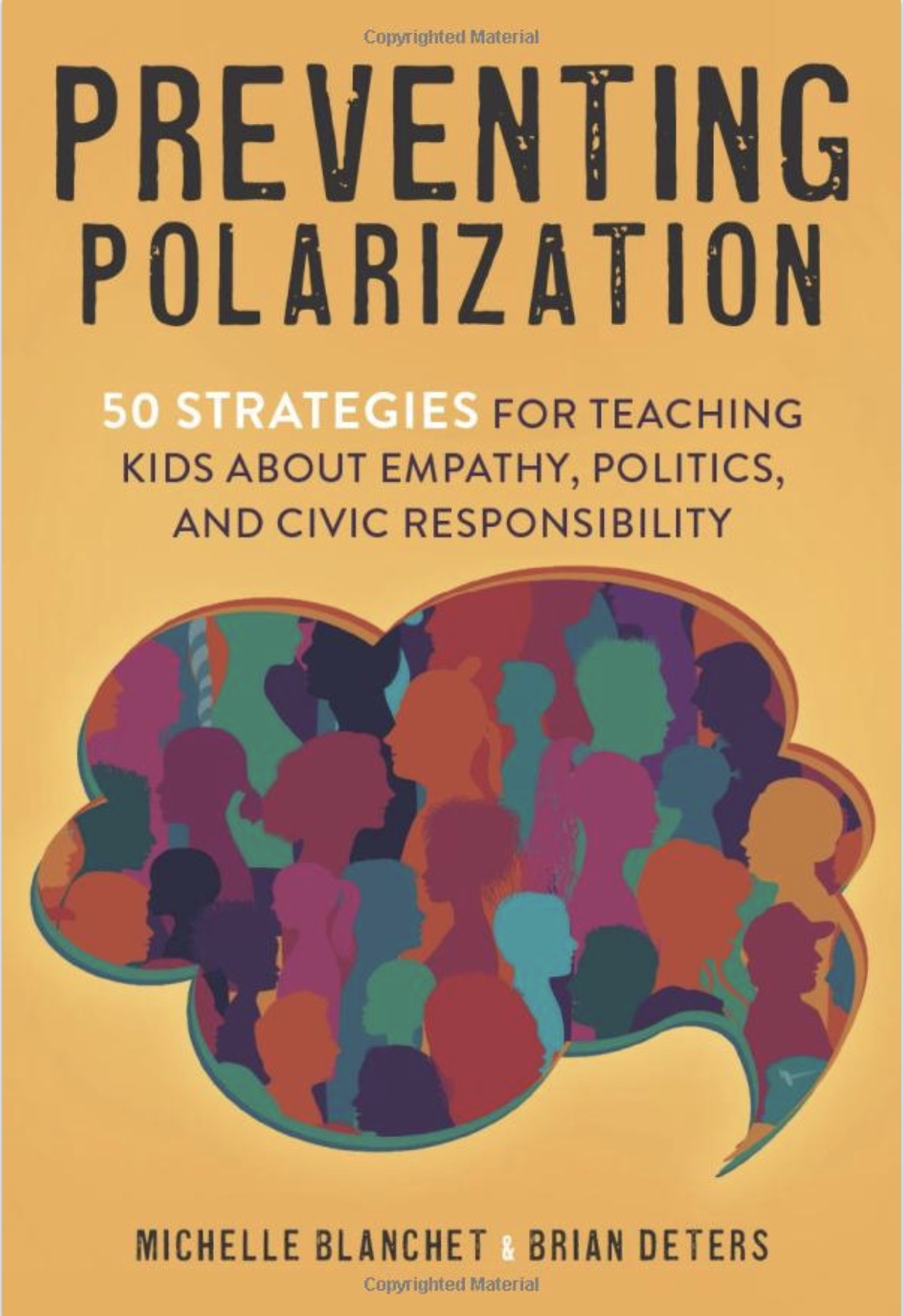
Preventing Polarization: 50 Strategies for Teaching Kids About Empathy, Politics, and Civic Responsibilty by Michelle Blanchet & Brian Deters is aimed at social studies (civics) teachers but is also a fine resource for teachers and parents of students in upper elementary school on up. We need to encourage students to take on controversial topics by gaining knowledge of all sides of each argument. They should also be allowed to engage in open-ended problem-solving, creative hands-on activities, collaboration, and community service.
Introduction: Why we need to stop avoiding civics and politics
- Not being able to talk about politics is a communications failure. We all need the same things and we all most likely want what’s best for everyone. The authors hope to help teachers and parents open communication on political problems so that they can be better solved, which won’t happen if they are ignored. Learn how to teach the 4 Cs: critical thinking, collaboration, creativity, and communication.
1. Practice Sense-Making
- Try to let students experience the world as much as possible, and let them try to make sense of what they experience. People learn best when they are actively involved, and what may seem like play can often be active learning. Ask more how and why questions and fewer what questions. Ask how something works using the examples the authors give.
- As for politics, beware of supporting a candidate based on their identity rather than their policies. Make sure they understand how the actions of the government impact their lives and encourage them to get involved. Polarization happens in times of rapid change.
2. Keep Asking Questions
- Children are very curious as they try to figure out how the world works. As we age, however, we become less curious as we no longer think we need to understand more. The trick, therefore to becoming a lifelong learner is to stay curious. You do this by questioning everything. It’s the teacher’s job to ask a lot of questions to encourage critical thinking and to encourage students to ask questions themselves. Teachers can use question quotas and other techniques included here.
3. Cultivate Humility
- A wise teacher once told me “Dr. Green, you have to keep your ego out of it.” The other thing you need to do is to help students do the same. For this you need an open mind, be ok with being wrong, and learn from mistakes. Learning how to manage your own emotions is vital if you want to model this behavior. A respectful disagreement involves being hard on the problem and easy on the other person.
- You want kids to be confident, but not overconfident. Be certain not to embarrass anyone for being wrong. Finally, the authors suggest conducting structured debates where students make statements, present data, explain how the data supports their statement, prepare for rebuttal, and present a conclusion.
DrDougGreen.com If you like the summary, buy the book





